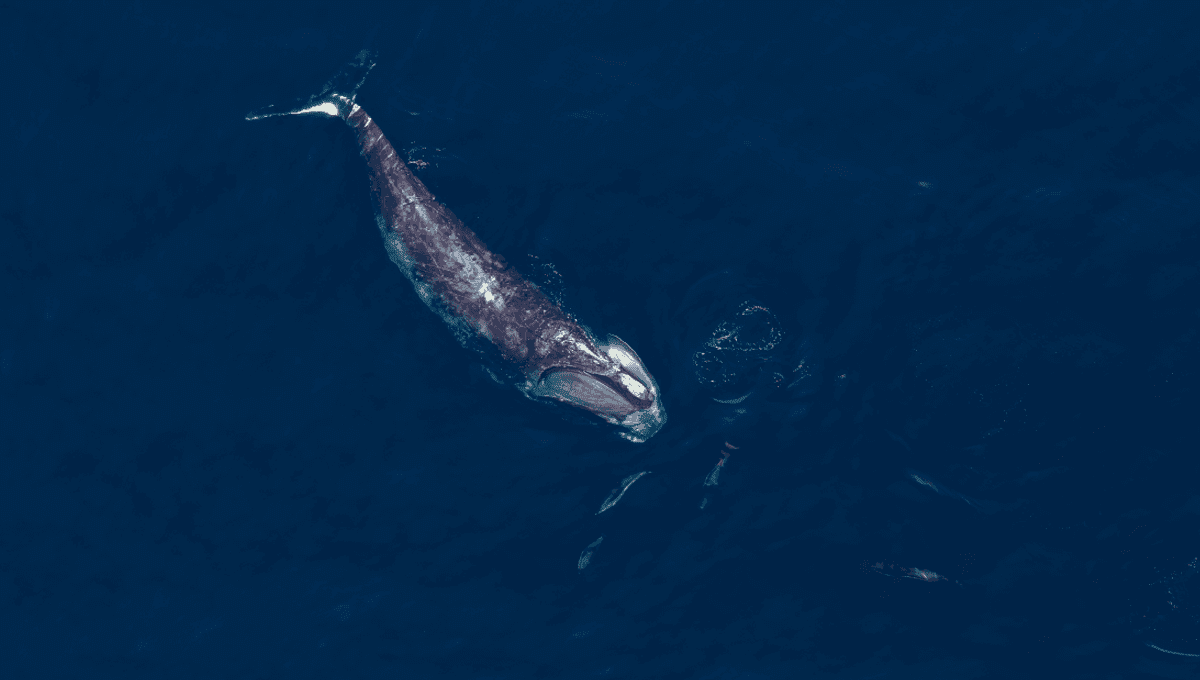
It takes balls to contemplate the sheer enormity of the North Atlantic right whale’s gargantuan gonads. Weighing in at around 450–500 kilograms (992–1,100 pounds) each when fully grown, the combined weight of their testicles is about the same as Volkswagen Beetle.
North Atlantic right whales (Eubalaena glacialis) have the largest testicles in the animal kingdom, which might have you questioning why you’ve never seen them. After all, if there was a photo doing the rounds on the internet of a whale with two polar bears for testicles hanging from its midsection, wouldn’t you remember it?
Well, your memory is serving you correctly, because the right whale’s testicles are concealed within its body. As cetaceans, these whales are mammals – but unlike their terrestrial relatives, having the testicles hanging out simply wouldn’t do from a temperature perspective.
Warm-blooded mammals are too hot for testicles, so many of them have evolved to have testicles that hang down where they can keep cool. That layout gets a bit nippy for animals that are permanently submerged in cold ocean water.
Whales’ bodies are also too hot for testicles, but they’re equipped with a rete mirabile (Latin for “wonderful network”) of blood vessels that help to control their temperature by bringing in blood from cold extremities.
Right whales’ testicles might be hidden from view, but they’re a force to be reckoned with, capable of producing 4.5 liters (1.2 US gallons) of sperm. It’s thought that producing so much is a means of “flushing out” the competition, so to speak. Female right whales will copulate with multiple mates, giving males the motivation to get rid of any competitor sperm.
Being able to dilute the sperm of other males with vast quantities of their own improves their chances of reproductive success. This means that the whales with bigger testicles have historically been more likely to pass on their genes, giving rise to a next-gen of giant-balled right whales.
Interestingly, as Whales Online explains, the competition puts older males ahead. Breeding begins at eight years of age, but most father whales are aged 15 or over. It’s also the older males who are more likely to successfully breed from one year to the next.
A win for older animals for a chance, but not necessarily great news for the species. Age being tied to reproductive success complicates conservation efforts, as “breeding stock” takes longer to nurture. With the same animals breeding year-on-year, it also reduces the genetic diversity of whale populations, making them vulnerable to harmful mutations.
For right whales, it seems bigger balls equals mo babies, mo problems.
Source Link: Right Whales’ Testicles Weigh A Ton, Literally